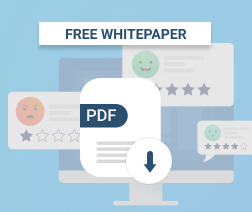In today’s competitive business landscape, there is no real differentiator between the types of services offered by MSPs. This means that managed service providers must work harder than ever to ensure the survival of their businesses. You’ll lose out to the competition if you’re unable to bring in new clients consistently and retain existing ones.
The best way to do this is by providing customers with high levels of satisfaction and engagement. Satisfied and engaged customers eventually become long-term clients — a very valuable resource for MSPs.
To help you get started, here are some best practices for MSP customer retention.
#1 Listen to Your Clients
With the advent of automation and remote monitoring and management (RMM) platforms, most IT support tasks (endpoints patching, backup, and data recovery) can now be done remotely. Although such tools enable MSPs to deliver superior results every time, they reduce the face-to-face time MSPs have with clients. Over time, it becomes easier for clients to replace a faceless group of technicians offering remote IT support. As such, more face time with your clients is vital to building strong relationships.
In addition, having actual conversations with clients allows you to assess your company’s standing. You get to know what your customers think about your service or product, and any pain points they may have. Listening to your clients provides you with vital information that you can use to improve service delivery and strive for higher levels of engagement and customer satisfaction.
Further reading Mastering Customer Service for MSPs
#2 Collect Feedback
MSPs must take heed of the needs, expectations, and pain points of their clients to deliver great customer experiences consistently. A reliable way to understand what your clients need and expect from you is to put in place a system for collecting and analyzing customer feedback. Short surveys can provide you with fast and relevant feedback on areas where you’re falling short. Another way to collect relatable feedback is to ask a customer for a testimonial or a service review.
You should schedule a face-to-face meeting or place a phone call to clients who no longer want to use your service to help you understand why they are leaving. Such feedback can help customer success teams identify flaws in service delivery and create strategic plans to improve the customer experience.
#3 Always Do Onboarding and Follow-ups
A smooth and consistent onboarding process for new customers helps set your customer relationships off on the right foot. It also sends a message that you are organized and committed to your customers’ experience.
Begin the onboarding process by collecting basic information about the customer. Then, create a detailed SLA tailored to the customer’s needs. Make sure, too, that the client has a chance to become acquainted with your processes and the team members who will be providing them.

Last, but not least, follow up with the customer after the onboarding process ends, to ask whether they have any questions, complaints, or feedback. Make sure, too, that they know which communication channels to use to reach you if a problem should arise after onboarding is complete.
#4 Reward and Encourage Clients
Rewards and discounts aren’t just for encouraging customers to sign up. They are also a great tool for encouraging and rewarding customer loyalty.
Consider the following strategies for building a customer loyalty program:
- Gift cards for customers who do things like participate in surveys or leave reviews of your business.
- Redeemable customized rewards. For example, customers could earn points for various interactions with you, and then convert those points to cash and redeem them as payment for services you provide.
- Free materials. You could distribute these during onboarding or as a thank you. The materials need not be fancy; they could be as simple as articles for customers to read.
- Rewards for participating in referral programs. These should typically be more substantial, and ideally tailored to the customer’s interests: a bottle of champagne, for example, or a new iPad for a customer who needs one.
- Bonuses for customers who purchase additional services from you. For example, the first additional purchase could be rewarded with extended support services, the second with a pricing discount, and so on. You can tailor rewards to different accounts, depending on how profitable each one is.
Further reading How to Enhance MSP Customer Experience
#5 Track Customer Retention And Customer Retention Cost
It’s always cheaper to retain existing customers than to acquire new ones. In fact, signing up a new customer costs businesses up to as seven times as much as retaining one you already have. (That figure is a guideline; the exact cost varies from business to business.)
Toward that end, MSP business owners should carefully track metrics data on customer retention. Key points to follow include:
- Customer departure rates: how many customers leave per week, month, or year?
- Customer retention rates: how many customers remain customers for a minimum period of time (such as a year)?
- Why do customers leave? Answering this question will require some qualitative analysis, but you can also use data to gain insight. Do customer departures increase at certain times of the year, for example? Did a change in your business practice or service offerings correlate with a spike in departures?
Using metrics and information like these, you can calculate your customer retention cost by determining how many active customers you have, how much money you spent acquiring and supporting them, and how much profit these customers bring in.
Wrapping Up
Developing strong customer relationships is vital to your bottom line. As MSPs face tougher competition in today’s global business landscape, they need to do more to set themselves apart from the pack. Since the strength of your customer relationships can make or break your MSP business, doubling down on existing clients is a great way to gain an edge over the competition. By taking a strategic approach to customer retention, MSPs can retain existing clients and simultaneously expand their profitability and customer base.








